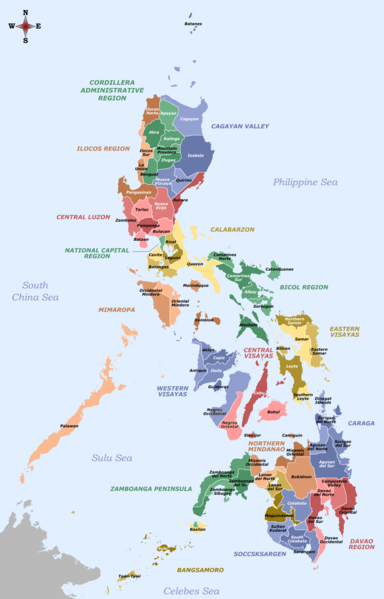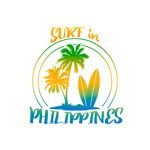Philippines Info
The Philippines is an exotic tropical destination that offers the clearest water on the planet, endless stunning beaches and has wonderfully modest people, guaranteeing any visitor a once in a lifetime experience. With 7,000 + islands, this Southeast Asian country has so much to offer and is any explorer’s paradise.
This archipelagic country is made up of three regions; Luzon, Visayas and Mindanao. It’s location on the Pacific Ring of Fire and close proximity to the equator makes the Philippines prone to earthquakes and typhoons, but also bestows it with abundant natural resources and some of the greatest biodiversity on the planet.
It’s the 12th most populated country in the world with 100 million+ people; it’s a melting pot of different ethnicities and cultures and around 170 local dialects, with Filipino and English as the official languages.
The Philippines is an emerging market and a newly industrialised country, its economy is transitioning from being based on agriculture to one based more on services and manufacturing. With an expanding economy, the growing middle class now have more spending power.
Due to its geography and very recent economic growth, a lot of the country is still untouched with many undiscovered surf spots still out there. In many of the lesser known surfing areas, only the locals will have knowledge about what they call “secret spots” and you’ll have to build their trust over a long period before they disclose these safe guarded locations.
They’re very protective about the integrity of their surf spots, taking into consideration the surfing experience for the locals and the natural environment at the same time.

Surfing in the Philippines
With endless kilometres of coastline, the Philippines is soon to be the next global hot spot for surfing. Surfing is growing in popularity within the Philippines but is yet to develop as a national sport, with very little investment into the sport from the government. The different surfing areas have an array of local surfers, from groms to the older surfers who were most likely pioneers of surfing in their area. With a variety of reef, beach, point and river breaks at your fingertips, you’ll get to experience a snippet of what the locals get to enjoy daily. World-class waves combined with tropical conditions will entice you to jump into the water several times a day, so make sure your fitness is at its peak. The locals are super fit and agile so they may leave you behind if you’re not in top form.
From a mix of popular surf spots like the world-famous cloud 9 surf spot, supported by an array of surf camps offering surf lessons and surf wear, to undiscovered surf spots on remote islands, the Philippines has it all.
Read more about surfing in the Philippines
Weather in the Philippines
The Philippines is a tropical country and is generally warm and humid year-round, with a median temperature of 26.6 °C both inside and outside the water. It has two distinct seasons: dry season (northeast monsoon) which is November to April and wet season (southwest monsoon) which is May to October.
The northeast monsoon is dominated by the trade winds, which bring clear blue skies and sunshine for most of the islands during the period, with 90% humidity being a common occurrence. August to October are the best months for quality east coast surf; good swell and perfect surface conditions can be expected.
The southwest monsoon is dominated by the monsoon trough which causes frequent rain and the regular threat of typhoons. The northern Philippines has the highest frequency of tropical storms and typhoons in the world. During the wet season, tropical depressions and typhoons forming over the western Pacific (south and east of Japan) provide the best quality swells.
The Philippines reliance on typhoon-generated swells means swell can be irregular, but when it arrives, it can produce some of the best waves in the world.
Read more about weather in the Philippines
Best time to surf in the Philippines
The best time to surf in the Philippines can vary due to its geography; storm systems directly affect the swell that breaks on the shores of the Philippines.
Generally surfing in the Philippines depends on the two monsoon seasons, the northeast and the southwest monsoon.
The northeast monsoon (November to April) can produce top-class swell that lights up the eastern breaks; larger weather systems can wrap around the northern tip of Luzon.
The southwest monsoon (May to October) can generate sufficient swell to break on the north-west coast of Luzon, however further south on the west coast the swell is limited due to its proximity to large islands like Borneo.
Normally, the best months to surf in the Philippines are August through to the beginning of November, the coast gets the most typhoon swells and the best winds for surfing during this period.
From December to April the winds are often strong and cross-shore with big swell. May to July generally has smaller swell but ideal conditions, however it’s less consistent at this time of year so keep this in mind when planning your surf trip.
Read more about best time to surf in the Philippines
Surf skills required to surf in the Philippines
Surf conditions in the Philippines are generally suited to intermediate to advanced surfers with reef breaks featuring a great deal throughout the region. To take on these breaks you need to have vast knowledge about currents and reading waves, have strong paddling skills, be able to easily navigate waves of 4-6ft and be able to hold your breath in case you’re held under.
The average swell size is around 6ft but can get up to 12ft+ when the swell intensity increases.
For those that aren’t at that stage yet, there are beginner breaks dotted around the country with surf lessons available from surf camps.
Read more about surf skills required to surf in the Philippines
Three Regions in the Philippines
The Philippines is generally described as having three primary island groups, namely: Luzon, Visayas and Mindanao.
Luzon in the northern island group that includes surf areas like La Union, Baler, Real and Zambales. Visayas is the central island group with surfing areas like Eastern Samar and Dumaguete. And Mindanao the southernmost island group of the Philippines, it includes the infamous Cloud 9 surf spot located on Siargao Island, as well as surf areas like Lanuza and Dahican.
Read more about three regions in the Philippines
